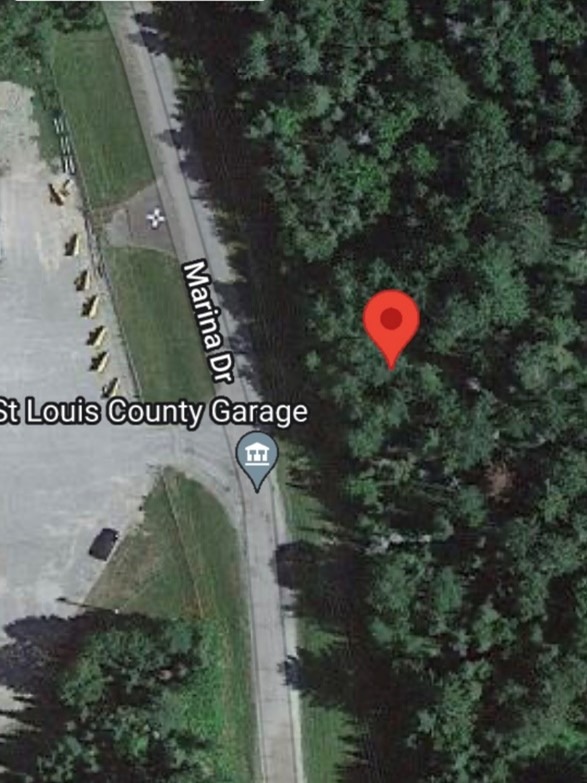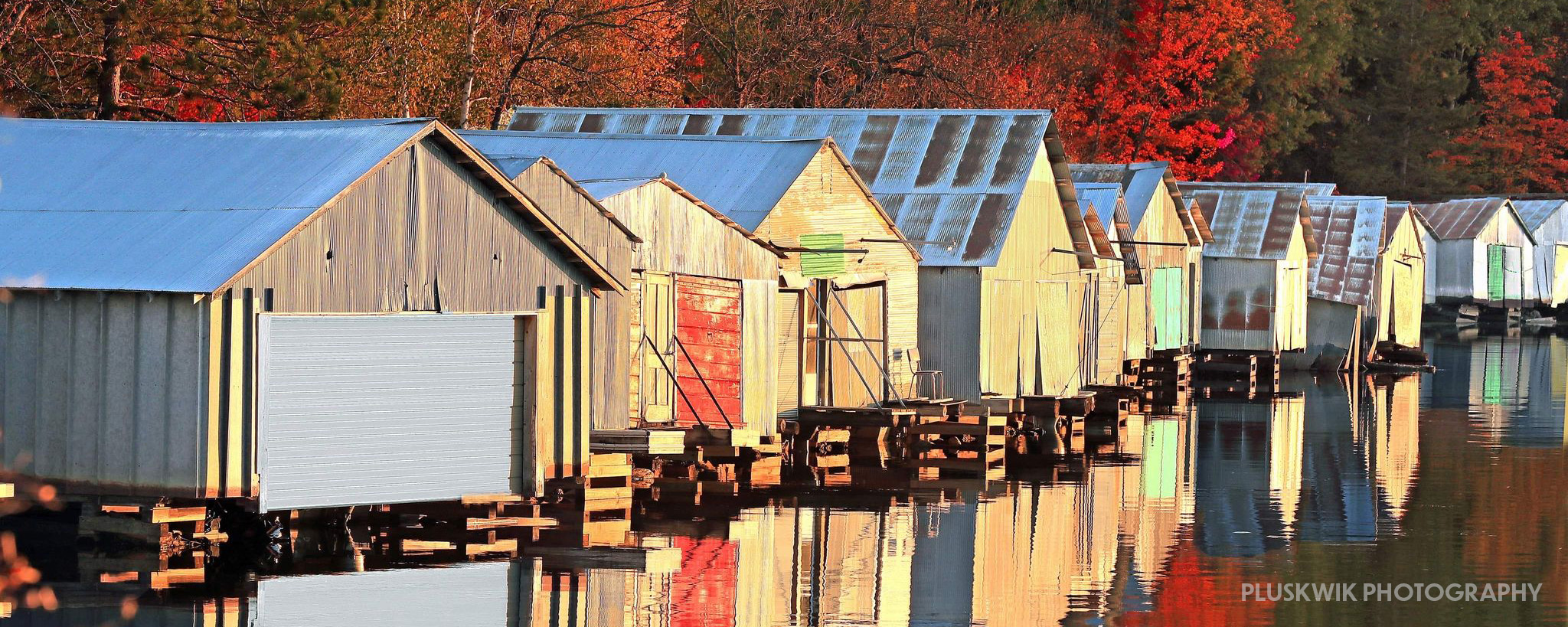STORIES FROM THE TOWER AND LAKEVIEW CEMETERIES
W. N. Shephard, early Tower resident, wrote about the first burial in the cemetery, at noon on July 7th, 1884: “About 12 o’clock P.M. July 7th, 1884, I arrived at Tower and was informed that the first Tower funeral services were held that afternoon over the remains of a man named Brown who had been killed in the Breitung Pit.”
Before the Tower Cemetery Association was created and the Lakeview Cemetery was cleared and built, Tower had a cemetery on the south side of the East Two River, in a swampy area slightly uphill of the river. This was one of the few places around the area that wasn’t immediately thought to have gold or iron, and wasn’t suitable for farming, so was instead used to bury the dead.
This first Tower cemetery, if such it might be called, was located across the river from the Minnesota Iron Company’s saw mill. At first, and for a considerable time, there was no bridge across the river leading to the cemetery, and when there was a funeral, if there were a sufficient number of logs in the saw mill’s boom, boards were laid across them to make a temporary bridge for the use of the funeral procession. If there were not enough logs in the boom to permit this, folks made a temporary raft by fastening a sufficient number of logs together and they used pike poles to propel the raft. The raft carried the casket, the casket bearers, and, if there happened to be an officiating minister, he was included. Next they took over the mourners, and then any friends of the deceased who were not afraid to risk themselves on the raft.
Most of the people in the initial Tower Cemetery were employees of the sawmills and the mines. Newspaper articles described the ultimate end of some, usually due to accidents. Many children were also buried there, dying from various diseases.
N. Shephard shared a story that came from this early era:
“I remember on one occasion when Billy Bonathan was returning for another load, Billy pushed a little too long, big pike pole stuck in the bottom of the river and when he attempted to pull the pole out it pulled him into the river.
“On another occasion one of those newly arrived Italians with a velvet coat, green hat and red feather saw the lumber jacks ignoring the plank walk and going across on the logs. It of course looked easy and he tried to follow suit but unfortunately soon struck a loose log and the monkey show began. It was the only time in my life that I saw a funeral procession forget the gravity of the occasion and indulge in uncontrolled laughter. The lumberjacks went to the rescue or the undertaker would have had another case.”
The initial Tower cemetery is located on lands now occupied near the Marina Road and St. Louis County garage and stretch to the east toward the river, near what was the old Highway 1 route coming into Tower from the southwest. (The powerlines now follow this route.) According to the record, no formal layout was adopted and no system of plots was created, so people generally were buried wherever they wanted to be, with the typical separation of groups of people into their own areas.
The early burial area that as yet had no name, was swampy and often the grave attendant had to bail the water out of the grave before the casket could be put in. Some of the now sunken graves hold standing water. W. N. Shephard illustrates this terrible situation:
“The said burial ground most certainly was not a desirable one, being somewhat swampy as was much of the land in and around Tower at that time. Not infrequently the party in charge of the grave would have to be on the watch and as soon as the funeral procession came into view, he would proceed to bale the water out of the grave and sometimes he would have to throw himself into high in order to get the water out before the funeral arrived. I recall more than one instance when the water had risen and covered the rough box by the time the minister had finished his service.
“This, was, to say the least, a very deplorable and distressing condition, but the ol- time pioneers in new districts often were compelled to bear and put up with conditions and things that in after years seemed, even to themselves, almost incredible. In some cases, for the better protection of the remains, the rough box was lined with zinc and after the coffin or casket was placed therein, the zinc cover was soldered on. Sometimes the casket contained an airtight metallic lining, and in many instances the remains were shipped outside for interment.”
The cemetery grounds were not laid out in lots, in fact there was no system whatever, and with the exception that one side of the cemetery was used exclusively by the Catholics, the gravesites selected were chosen randomly on any spot that seemed to be the most desirable.
There was a strong desire among the local folks for a more suitable location for the interment of the dead. It was the prevailing idea that it should be located somewhere between the village of Tower and the mine in Soudan where it might be conveniently accessible to both places. However, there was a problem. In those days of exploration and excitement, when 99 per cent of the inhabitants, including the Indians, were prospective millionaires, almost every forty acres of land was supposed to and believed to conceal beneath its surface a most valuable iron mine. Consequently, they were unable to get a suitable location for a new cemetery until a location had been vetted to not have iron ore beneath its surface.
In 1888, a meeting with Neil McInnis as chairman and Geo. West as secretary was held to form an organization to be known as the Tower Cemetery Association. The organization was formed, articles of incorporation drawn up and duly recorded in the office of the register of deeds. But, according to W. N. Shephard, ”this, like many other wonderful and promising schemes of those days, landed abruptly on the ground as soon as the wind played out, or became totally effaced from the minds of the organizers as soon as the first saloon was reached… nothing tangible resulted from the organization.”
Two years later, on October 3, 1890, a meeting attended by 32 citizens was held in the Tower City Hall. The meeting was a two-years-later reprise of the 1888 Tower Cemetery Association organizational meeting. The difference was that this meeting produced actual results. Articles of Incorporation were drawn up pursuant to the laws and signed by the 32 citizens and recorded in the office of the Register of Deeds for St. Louis County.
The Articles of Incorporation provided for a board of nine trustees, to be elected by the members of the Tower Cemetery Association, which was comprised of the owners of the cemetery lots. Three board members would be elected each year. The annual meeting for the election of trustees would be held each October. The trustees would elect their president, secretary, actuary and treasurer. The first officers elected were Neil Mclnnis, President, W. N. Shephard Secretary and Actuary and Mayor James Tippet, Treasurer.
The Minnesota Iron Company, of which D. H. Bacon was president, donated and deeded a parcel of land that the Tower Cemetery Association named “Lakeview Cemetery”. Lots were sold in advance to obtain the necessary funds, the land cleared, fenced, plotted, and staked. Soon thereafter, many of the caskets from the old cemetery were moved to Lakeview Cemetery. Unlike in the early days, the purchaser of a cemetery lot was furnished with a deed to it and the deed was duly recorded in the Secretary’s Deed Book for recording of deeds. A duplicate of the Deed Book was kept in the bank vault so that in case of loss or destruction of the Tower Cemetery Association’s Secretary’s Deed Book, the records would still be available. A book of burial records was also provided and a duplicate, also was kept in the bank vault.
The records were not well kept from the early times and there is no clear record of how many occupied graves remain in the initial Tower Cemetery besides the two that are still marked with stones. There are many areas of graves that have been transferred but also some areas where there are indentations that look like they have never been dug and the dirt above them has settled.
In 1895, five years after Lakeview Cemetery was established, W. N. Shepard, the first Secretary of the Tower Cemetery Association, sold his Tower mercantile business, resigned as Secretary and Actuary and left Tower. W. H. Congdon was elected to fill the vacancy.
The Tower Cemetery Board was sporadically active. When W.H. Congdon died W.N Shepard returned to Tower to execute Congdon’s estate. Snippets of an article Shepard wrote for the benefit of the local citizens in The Tower News in in August, 1922 follow:
“Just now at a time when everyone appears to be at sea as to who is at its head and just what the status of the Lakeview Cemetery Association are, the following from the pen of W. N. Shephard, early day Tower resident, will be of much interest.
…”It appears that the (Tower Cemetery) association has ceased to function and this condition has existed so long that no one seems to know much about the organization, who constitute the board of trustees or who may be the officers except that Will Congdon was presumed to be the secretary.
“Knowing that there must be some records somewhere, when time and opportunity permitted, I made search and found the original articles of incorporation, minute book, book of deeds, book of burial records, etc. From these it appears that the last meeting of the board of trustees was held in 1909 and the last meeting of the association was held in 1908, and that the association had not been extremely active for a considerable time prior to 1908. Also that S. Nichols was its president at that time and being about to leave Tower permanently called a sort of impromptu meeting and appointed 10 trustees.”
“Although the articles of incorporation and regulations call for only nine trustees, I suppose Nichols wanted to be generous and appointed ten as follows: J. H. Jeffrey, W. H. Congdon, O. W. Akerson, J. D. Murphy, Carl Howe, Gunder Peterson, C. C. Campaigne, Fred Merrill, Albert Kitto, and Elisha Hill. As to whether these parties were informed of their appointment of course is unknown to me.
“J. H. Jeffrey was appointed president; W. H. Congdon secretary; O. W. Akerson treasurer. J. D. Murphy and W. H. Congdon are dead; O. W. Akerson, C. C. Campaigne and Elisha Hill have left the city. This however, still leaves five resident trustees.
“I have delivered to J. H. Jeffrey the said books and records. The above is of course only a brief review of the matters relating to the association and for more specific details I would refer you to the officers’ records and papers now in the hands of the president. The articles of incorporation and the minutes will inform you of the section and chapter of the statutes under which the said association was incorporated and from them you can learn the powers and duties of the association and its officers.”
Sources: LakeVermilion.net
Tower weekly new, Vol. 23, N) 13 – August 11, 1922

